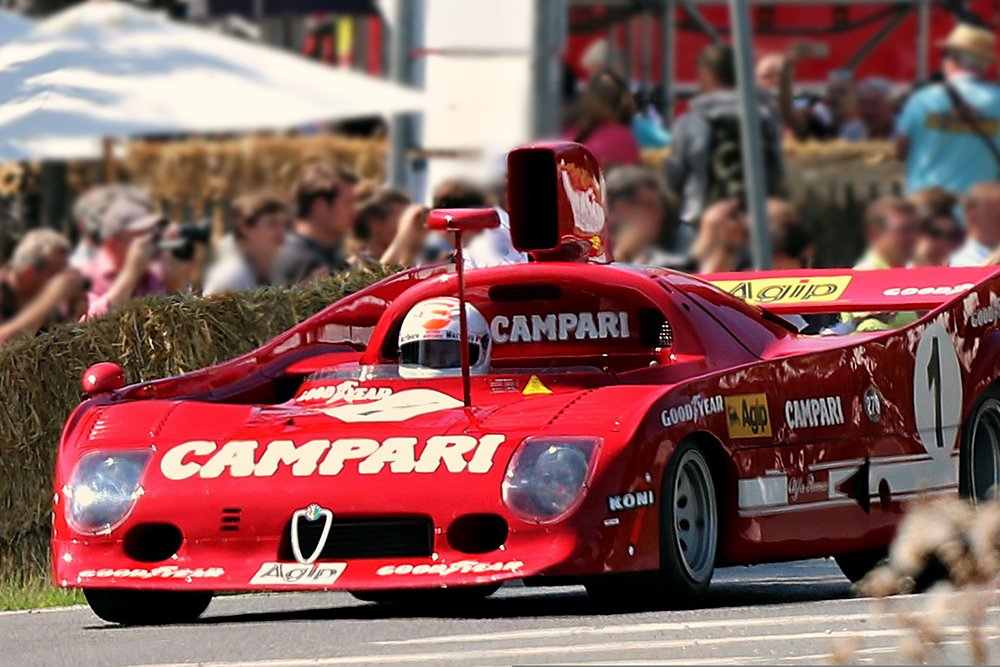
Italian motorsport is a vibrant tapestry woven with passion, precision, and a relentless pursuit of excellence. For over a century, Italy has been a powerhouse in the world of motorsport, producing legendary drivers, iconic racing teams, and cutting-edge technology. From the roaring engines of Formula 1 to the elegant curves of classic sports cars, Italian motorsport has left an indelible mark on the global racing scene. In this article, we will take a thrilling journey through the history of Italian motorsport, exploring its roots, evolution, and enduring legacy.
The roots of Italian motorsport can be traced back to the early 20th century when the country was experiencing a surge in technological innovation and engineering prowess. In 1907, the first Italian Grand Prix took place in Brescia, marking the beginning of Italy's love affair with racing. The race featured a 1,200-kilometer circuit that tested the endurance and skill of both drivers and vehicles. It was a resounding success, attracting competitors and spectators from across Europe.
One of the earliest pioneers of Italian motorsport was Enzo Ferrari, who would go on to establish the iconic Scuderia Ferrari racing team. Enzo Ferrari's passion for racing began in the 1920s when he started driving for Alfa Romeo. Later, in 1939, he founded Scuderia Ferrari, which would become one of the most successful and revered teams in Formula 1 history. Ferrari's dedication to perfection and his relentless pursuit of victory set the standard for Italian motorsport.
The 1950s and 1960s are often referred to as the golden age of Formula 1, and Italy played a pivotal role in shaping this era. Italian car manufacturers such as Ferrari, Maserati, and Alfa Romeo dominated the Formula 1 scene, with legendary drivers like Juan Manuel Fangio, Alberto Ascari, and Giuseppe Farina at the helm.
Ferrari, in particular, emerged as a force to be reckoned with, securing numerous championship titles and earning a reputation for innovation and performance. The rivalry between Ferrari and British manufacturer Lotus added a thrilling dimension to Formula 1, captivating fans around the world.
Perhaps the most iconic Italian car of this era was the Ferrari 250 GTO. Introduced in 1962, the 250 GTO remains one of the most coveted and valuable classic cars in the world. Its sleek design, powerful V12 engine, and racing pedigree make it a symbol of Italian motorsport excellence.
While Formula 1 was capturing the world's attention, Italy was also making its mark in endurance racing. The Mille Miglia, which translates to "Thousand Miles," was an open-road endurance race held from 1927 to 1957. The race covered a challenging route through Italy, with competitors driving on public roads, making it one of the most demanding races in motorsport history.
The Mille Miglia was a showcase of Italian automotive engineering, with Alfa Romeo, Ferrari, and Maserati cars dominating the field. The race attracted top drivers from around the world, and victory in the Mille Miglia was a prestigious achievement. Unfortunately, due to safety concerns, the race was discontinued in 1957, but its legacy lives on as a testament to Italian motorsport's daring spirit.
The 1970s marked a new era in Formula 1, with the emergence of a new generation of Italian drivers and teams. One of the most iconic figures of this period was Niki Lauda, an Austrian driver who joined the Ferrari team in 1974. Lauda's incredible talent and determination led to two Formula 1 World Championships with Ferrari in 1975 and 1977.
During this time, Italian racing teams faced stiff competition from other nations, particularly in the form of the McLaren team from the United Kingdom. The rivalry between Ferrari and McLaren in the late 1970s and early 1980s produced some of the most intense and memorable moments in Formula 1 history.
In recent years, Italian motorsport continues to thrive, with a strong presence in Formula 1 and other racing series. Scuderia Ferrari remains one of the most iconic and successful teams in Formula 1, with a rich history of championships and legendary drivers.
Italian car manufacturers such as Lamborghini and Pagani have also made their mark in the world of supercars, producing some of the most exotic and high-performance vehicles on the planet. These machines combine cutting-edge technology with Italian craftsmanship and design flair, captivating enthusiasts and collectors alike.
Additionally, Italian drivers like Sebastian Vettel and Charles Leclerc continue to carry the torch for Italy in Formula 1, showcasing their talent and dedication on the world stage.
Italian motorsport is not just about cars and drivers; it's also about the passionate fans known as "tifosi." These fervent supporters fill the grandstands, wave Ferrari flags, and create an electric atmosphere at every race. The tifosi's unwavering loyalty and enthusiasm make them an integral part of Italian motorsport's enduring appeal.
Italian motorsport is a rich tapestry of history, innovation, and passion that has left an indelible mark on the global racing scene. From the early days of the Italian Grand Prix to the modern dominance of Scuderia Ferrari, Italy's contributions to motorsport are legendary. The legacy of Italian motorsport lives on in the hearts of tifosi, the roar of engines, and the sleek lines of iconic cars. As long as there is a love for speed and competition, the spirit of Italian motorsport will continue to thrive and inspire generations to come.

More Details